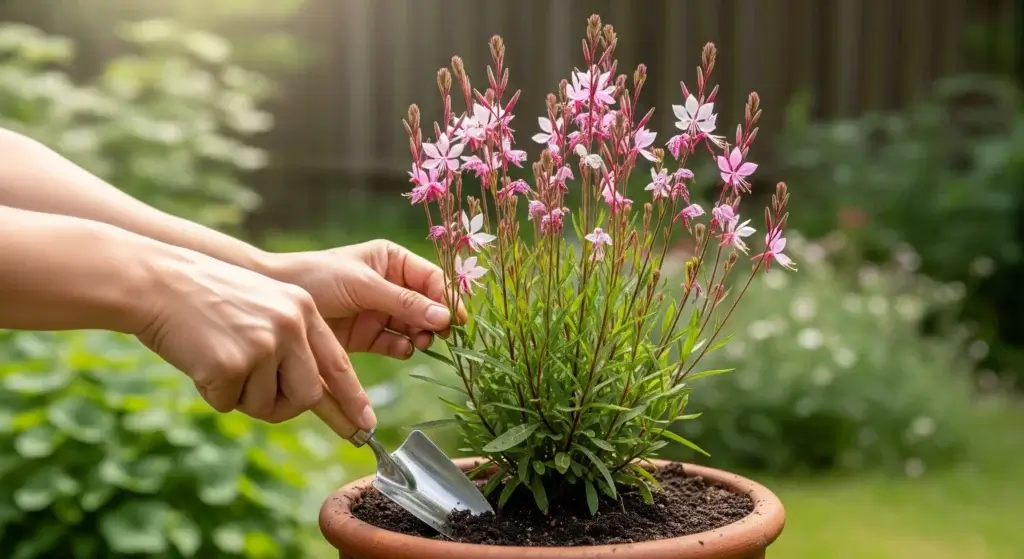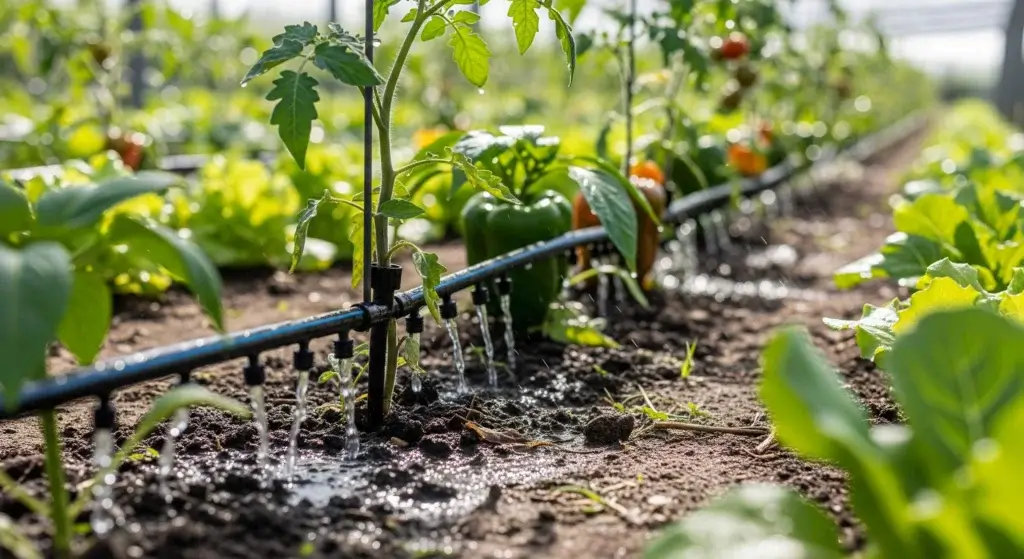
Growing pumpkins organically is a rewarding experience, whether you’re aiming for Halloween decorations or a delicious pie.
Pumpkins are a warm-season crop that requires a bit of planning, from choosing the right variety to protecting your plants from pests and diseases.
By following organic pumpkin care practices, you can grow a healthy, chemical-free crop.
In this guide, we’ll walk through everything you need to know about planting and nurturing your pumpkins organically.
Preparing for Planting
Before you start planting, take time to prepare.
Pumpkins need plenty of space, sun, and well-draining soil.
It’s also important to select varieties suited to your climate and intended use, whether ornamental or culinary.
- Read also: Organic Eggplant Care: Growing Healthy, Chemical-Free Eggplants
- Read also: Spinach Organic Fertilizers: Everything That Gardeners Should Know
Choosing the right variety
Pumpkins come in many shapes and sizes.
You’ll find varieties that are small and sweet, perfect for pies, while others grow to be large and decorative.
Some of the best organic varieties include:
- Sugar pie: A smaller pumpkin, ideal for baking and pies.
- Jack-o’-lantern: Great for carving and perfect for Halloween.
- Howden: A large variety that’s popular for carving, but can also be used in cooking.
Selecting an organic, disease-resistant variety will improve your chances of a healthy crop.
Check seed packets or suppliers to ensure you’re buying certified organic seeds.
Soil preparation
Pumpkins thrive in nutrient-rich soil.
They’re heavy feeders, meaning they need a steady supply of nutrients throughout the growing season.
To prepare your soil:
- Test the soil: Start with a soil test to check for nutrient deficiencies and pH levels. Pumpkins prefer a pH of 6.0 to 6.8.
- Compost: Add a generous amount of compost or well-rotted manure to enrich the soil. Aim for about 2-3 inches, mixing it into the top 6 inches of soil.
- Add organic amendments: Organic fertilizers rich in nitrogen, such as blood meal or fish emulsion, can provide a boost.

Seed Starting
Starting pumpkins from seeds can be a rewarding experience, and with a bit of planning, you can ensure a successful crop.
Here’s a detailed look at how to do it effectively:
Timing is everything
If you live in a cooler climate, it’s important to start your pumpkin seeds at the right time.
Pumpkins thrive in warm weather, so you should begin by starting the seeds indoors a few weeks before the last expected frost.
This allows the seeds to germinate in a controlled environment, giving them a head start before being moved outside.
Soaking seeds
Before planting, soak the pumpkin seeds overnight.
This step helps to soften the seed coat, which can encourage quicker germination.
It’s a simple way to improve your chances of getting strong, healthy seedlings.
Starting indoors
When you’re ready to plant, use biodegradable pots filled with seed-starting soil.
These pots are great because they can be planted directly in the ground later, reducing transplant shock for the seedlings.
Plant each seed about 1 inch deep in the soil.
After planting, place the pots in a warm and sunny spot—pumpkin seeds love warmth and light!
Transplanting carefully
Once your seedlings have grown and the outdoor soil temperature reaches around 70°F, it’s time to transplant them outside.
Make sure to space the seedlings 2 to 5 feet apart, depending on the variety of pumpkin you’re growing.
This spacing allows each plant enough room to grow and develop properly without competing for nutrients.

Planting and Care
Once the seedlings are in the ground, they need consistent care to thrive.
Pumpkin plants grow quickly and need regular water, nutrients, and protection from pests.
Planting time
Pumpkins are sensitive to cold temperatures, so it’s important to wait until all risk of frost has passed before moving them outdoors.
The best time to plant pumpkins is after the last spring frost, when the soil temperature is consistently above 60°F.
This ensures that your plants have the warm conditions they need to grow strong and healthy.
Watering
Pumpkins need a lot of water, especially during fruit development.
Here are some watering tips:
- Water deeply: Aim to water deeply once or twice a week, allowing the soil to dry out slightly between waterings.
- Mulch to retain moisture: Adding a 2-3 inch layer of organic mulch, like straw or shredded leaves, will help retain soil moisture and reduce weeds.
Fertilizing
For organic pumpkins, a balanced fertilizing plan is essential.
Pumpkins benefit from a steady supply of nitrogen early on, then a boost of phosphorus and potassium as they start to flower and set fruit.
- Early growth: Use a nitrogen-rich fertilizer like fish emulsion every two weeks during the early growth stage to encourage healthy leaves and vines.
- Flowering and fruiting: When you see flowers, switch to a phosphorus-rich fertilizer (bone meal is a good option) to support strong fruit development.
Pest and disease control
Pests and diseases can be challenging, but organic practices can help you keep them under control without chemicals.
- Cucumber beetles: Use floating row covers early on to protect young plants, and remove them once plants begin to flower to allow pollinators access.
- Powdery mildew: Reduce moisture on leaves, and apply organic fungicides like neem oil or a baking soda solution (1 tsp baking soda per quart of water) weekly.
- Squash vine borers: These pests bore into the vines and can kill the plant. Inspect vines regularly, and remove affected parts promptly.
Pollination
Pumpkins depend on pollinators, especially bees, to produce fruit.
The pumpkin flowers only open for a few hours each morning, so it’s helpful to attract pollinators by planting flowers nearby that they love.
If you notice that your pumpkins aren’t setting much fruit, you can also try hand-pollinating.
To do this, use a small paintbrush to gently transfer pollen from the male flowers to the female flowers.
This extra effort can help ensure a bountiful harvest!

- Read also: From Seed to Supper: Mastering Organic Broccoli Care
- Read also: Beat the Heat: Summer Plant Care Tips You Need Now
Final Thoughts
Growing pumpkins organically is a fulfilling experience that requires planning and attention to detail.
With the right care, your pumpkin patch will produce healthy, vibrant fruits ready for harvest by fall.
Remember to start with nutrient-rich soil, monitor watering, and stay vigilant about pest control.
The result will be a garden full of pumpkins that are both beautiful and free of harmful chemicals.



